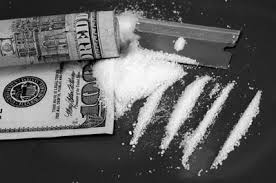Cocaine is a highly addictive central nervous system stimulant. Once used for valid medical purposes, it is now classified as an illegal drug. It is one of a number of substances detectable in drug tests.
In this article we will cover:
Cocaine Drug Testing
Drug testing is done in various situations, the most common of which relates to employment. Some employers require that a prospective employee complete a drug test as part of the application process, with the offer of a position contingent upon the results. Others conduct random drug testing of existing employees, particularly in industries where cognitive impairment poses a safety hazard.
There are a variety of methods that can be used to screen an individual for drug use. These include testing blood, saliva, breath, and even one’s hair, but the most commonly used test is done on urine. This is referred to as a urine drug screen or UDS.
A typical UDS screens for amphetamines, methamphetamines, cocaine, PCP, barbiturates, opiates and marijuana.
There are two types of UDS. The first is an immunoassay test. This type of UDS is cost-effective and produces quick results. The drawbacks of this type of test are that it is not able to detect every kind of specific drug or metabolite of the drug, and it sometimes produces a false positive result. That is, it indicates the presence of a drug metabolite in the absence of actual drug use. The immunoassay test is detecting a class of drugs, not the specific drug metabolite.
The second type of test uses gas chromatography/mass spectrometry (GC/MS). This test rarely produces a false positive result. However, it is more costly than the immunoassay test and the results take longer to obtain. The GC/MS identifies a specific drug metabolite at a specific quantitative value.
At National Drug Screening, all urine drug testing includes the immunoassay test and for non-negative screening results the GC/MS confirmation testing. All final lab results are reviewed by a Medical Review Officer (MRO). These processes rule out false positives.
Both tests use the same procedure for obtaining a urine specimen. The individual to be tested is given a sterile specimen cup. He is required to leave all personal belongings outside of the bathroom used for testing. This includes the emptying of pockets. In some cases, a same-gender nurse or technician may accompany the individual into the bathroom to be certain the testing procedure is strictly followed. The individual urinates into the specimen cup. At least 45 milliliters of urine is needed to complete the test – that’s about the same as a full shot glass. The lid is then placed on the specimen cup and it is handed over to the technician supervising the test. Both the individual being tested and the technician should maintain visual contact with the specimen at all times until it is packaged, labeled and sealed for transport to the testing laboratory.
Cocaine’s Presence In The body
So how long does cocaine remain present in the body? There are a variety of factors that affect the time it takes for evidence of cocaine use to be eliminated. These include the volume and purity of cocaine consumed, how frequently and regularly it is used, individual physiology such as weight and body type, and the rate of metabolism which relates in part to the functionality of the liver.
Another important factor is the method of testing. Cocaine and its primary metabolite, benzoylecgonine, have a range of detection windows based on the body substance being tested. Testing of blood and saliva will reveal cocaine usage for 12 to 36 hours after the last use; sweat will contain evidence for several weeks; testing of hair can reveal a history of cocaine usage for up to 90 days. The most common method of testing, however, is a urine drug screen. Cocaine and benzoylecgonine are detectable in urine for 2 to 5 days after a single use. Binge usage or heavy repeated ingestion will result in a positive urine test for up to 12 days. That time period may be even longer with chronic use.
Chronic use of cocaine results in the storage of the drug’s metabolites in the fatty tissues of the body, including the liver. However, these metabolites don’t remain stored. They are continuously released in the bloodstream even after the individual stops using the drug. Former chronic users of cocaine can test positive for a longer period of time.
The timeline for cocaine excretion can be further complicated by the coinciding use of alcohol. Not only is it dangerous to combine alcohol and cocaine due to the highly toxic effects on the body, but the resulting metabolite, cocaethylene, that is formed in the liver with concomitant use stays in the body longer than cocaine alone. So drinking alcohol and ingesting cocaine will further extend the time that a urine test will show positive drug use.
How To Pass A Cocaine Drug Test
While abstaining from use for a limited period of time could be effective when testing is expected, as in the case of applying for a job for instance, in cases where random testing is conducted the likelihood of a positive test is high with ongoing use of the drug.
As previously mentioned, false positives do sometimes occur, particularly with the immunoassay test. In the case of a positive result when there has been no drug use, the individual should have a gas chromatography/mass spectrometry (GC/MS) follow-up test done immediately. GC/MS confirmation testing virtually eliminates False positives; it is obviously essential to invalidate the results of the erroneous first test as quickly as possible. Of course, when using a professional drug testing provider like National Drug Screening, you cane confident that all urine drug testing includes the immunoassay test initial screen and GC/MS confirmation testing for all non-negative screening results. Again, this rules out false positive results.
Read related articles about:
The Facts About Cocaine & Testing For It
Positive Tests for Cocaine, Meth, and Marijuana Up in US Workers







